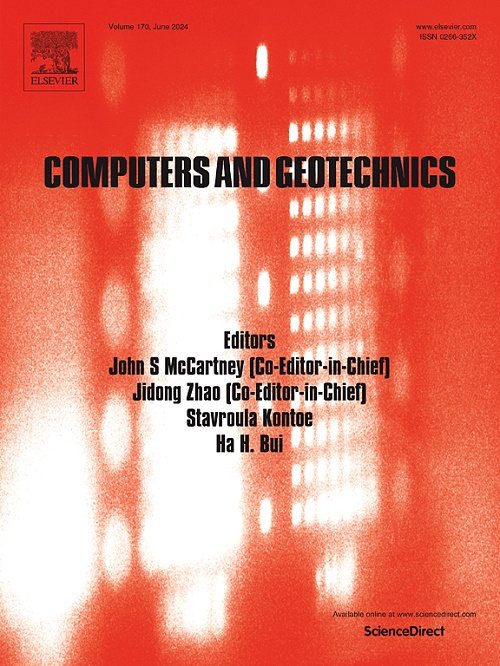Equivalent mechanical parameters and representative elementary volume of rock masses material using a modified fabric tensor
IF 5.3
1区 工程技术
Q1 COMPUTER SCIENCE, INTERDISCIPLINARY APPLICATIONS
引用次数: 0
Abstract
The roughness and spatial distribution of fractures are fundamental to the study of the equivalent strength and deformation characteristics of complex fractured rock masses. Traditional fabric tensor models often approximate fractures as planar surfaces, which introduces certain limitations, while natural fractures typically exhibit rough and undulating surfaces. Thus, this study improves upon the existing fabric tensor model and develops a method for calculating the mechanical parameters of rough discrete fracture networks (RDFN). Besides, example models are constructed to accurately quantify fracture roughness, and a comparative analysis is conducted between planar discrete fracture networks (DFN) and RDFN. According to the research results, the RDFN model generating by the W-M fractal function, exhibits significant roughness characteristics. Compared to the DFN model, the inherent roughness of RDFN significantly affects the equivalent elastic mechanical parameters, with an influence ranging from 5% to 15%. Further, the numerical solutions of the simple model closely match the analytical solutions, with minimal error. While the increase in fracture roughness significantly influences the mechanical properties, it has a relatively small impact on the representative elementary volume (REV) of the rock mass. The findings provide valuable insights into the analysis of the equivalent behavior of fractured rock masses with rough fractures.
求助全文
约1分钟内获得全文
求助全文
来源期刊

Computers and Geotechnics
地学-地球科学综合
CiteScore
9.10
自引率
15.10%
发文量
438
审稿时长
45 days
期刊介绍:
The use of computers is firmly established in geotechnical engineering and continues to grow rapidly in both engineering practice and academe. The development of advanced numerical techniques and constitutive modeling, in conjunction with rapid developments in computer hardware, enables problems to be tackled that were unthinkable even a few years ago. Computers and Geotechnics provides an up-to-date reference for engineers and researchers engaged in computer aided analysis and research in geotechnical engineering. The journal is intended for an expeditious dissemination of advanced computer applications across a broad range of geotechnical topics. Contributions on advances in numerical algorithms, computer implementation of new constitutive models and probabilistic methods are especially encouraged.
 求助内容:
求助内容: 应助结果提醒方式:
应助结果提醒方式:


